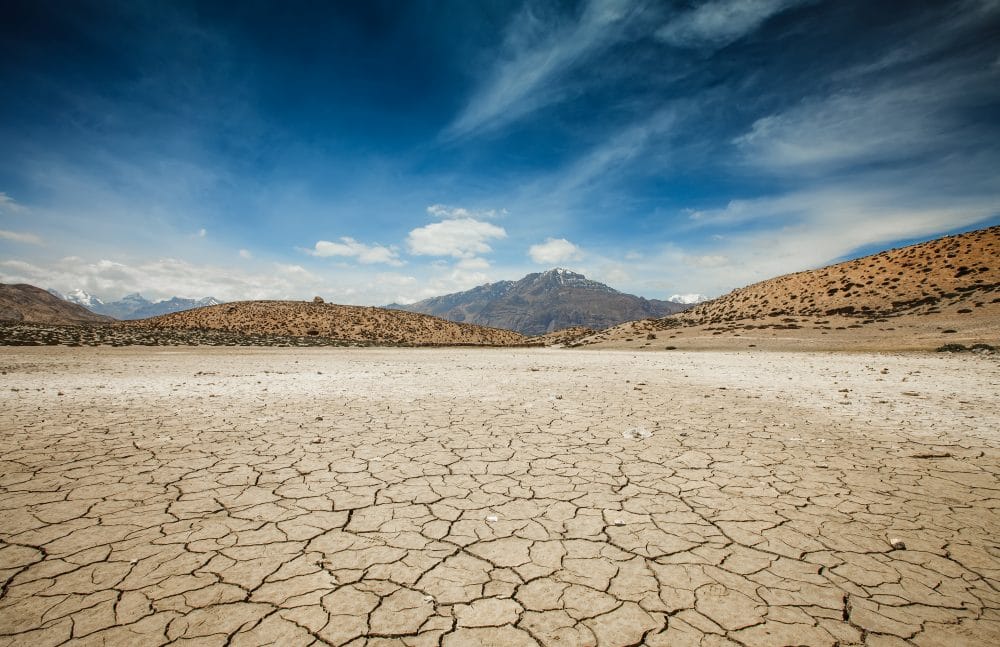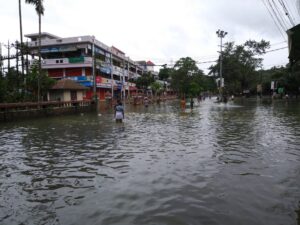
A three-hour siesta will soon become a part of the working day for Kerala’s workers, as part of a policy to help them beat the heat. The policy will be good for workers in the short term – but over time, India’s climate will worsen to the extent that a siesta won’t be enough. .
The move was announced by government officials on Wednesday to improve labour conditions and workers’ safety. The three hour siesta period will last from noon to three p.m.. The announcement came as the state braces itself for extreme heat in the coming months as climate change manifests in extreme weather patterns.
Already Kerala’s disaster management authority has issued a three-month warning for risk of sunstroke. In response, the state government is taking proactive measures to avert a potential crisis, announcing the siesta solution and other worker benefits to help workers avoid risks to health from heat stress.
The initiative highlights a growing trend of short-term responses being taken to combat the effects of climate change. The impacts of this trend are far-reaching and likely to get worse in the coming years. Extreme heat is one of many ways this will be seen.
![By U.S. Department of State from United States [Public domain], via Wikimedia Commons](/wp-content/uploads/2017/11/Secretary_Kerry_Addresses_Delegates_Before_Signing_the_COP21_Climate_Change_Agreement_on_Earth_Day_in_New_York_26514585581-300x200.jpg)
“To India’s credit, measures – many of them low-cost and common sense – have been enacted thus far to mitigate the impact of rising temperatures…such initiatives, however, will not stave off India’s coming climate crisis, nor will they lessen its severity and catastrophic impact”
To India’s credit, measures – many of them low-cost and common sense – have been enacted thus far to mitigate the impact of rising temperatures. Simplistic initiatives such as public drinking water kiosks succeeded last year in bringing down the death toll from extreme heat to the teens during last year’s heatwave season, compared to years past when thousands of fatalities were reported as India boiled.
Such initiatives, however, will not stave off India’s coming climate crisis, nor will they lessen its severity and catastrophic impact upon vast swathes of the country’s population. In the past seventy years, India’s surface temperatures have skyrocketed. The 2008-17 decade in India stands as its hottest on record.
The Paris Agreement on Climate Change, to which India is a signatory, commits nations to avert a global temperature rise of below 2℃ above pre-industrial levels, with a limit of 1.5℃. For India, a 1-2℃ temperature rise by 2050 is a best-case scenario if decisive action is taken now. Without action, temperatures could rise by up to 3℃. Such a scenario could have devastating effects on living standards for roughly 600 million Indians and cost India as much as 2.8 percent of its GDP by 2050, according to the World Bank.

“Even a temperature increase of just 1.5℃ could carry severe implications for India…conceivably [resulting] in mass displacement due to regions becoming uninhabitable, either through extreme temperatures or flooding due to rising sea levels”
Even a temperature increase of just 1.5℃ could carry severe implications for India. The United Nations predicts a 1.5℃ rise in global temperatures by 2040. For India, impacts could conceivably result in mass displacement due to regions becoming uninhabitable, either through extreme temperatures or flooding due to rising sea levels.
The mass migration that would ensue as a result of this displacement would strain food production and the availability of resources. This would be compounded by the effect of inclement climate patterns on crop quality and reserves of groundwater, entailing food and water shortages. Carbon dioxide pollution will only deplete crop quality further, causing malnutrition on an epidemic scale in the years to come.
This is to say nothing of the climatic disasters of the kind Kerala witnessed last year with once-in-a-lifetime flooding, causing mass displacement and hundreds of deaths. Not only does India have flooding to worry about: there are dust storms and, of course, heatwaves, all with the very real and very salient possibility of causing death, destruction and displacement on a mass scale that the coming years will only exacerbate.

“”You need to talk action now against the climate crisis, not just talking about it””
Earlier this year, a message was delivered to Prime Minister Modi by teen climate change activist Greta Thunberg
“Dear Mr Modi, you need to take action now against the climate crisis, not just talking about it because if you keep going on like this, doing business as usual, and just talking about and bragging about the little victories, you are going to fail. And if you fail, you are going to be seen as one of the worst villains in human history in the future. And you don’t want that.”
Workers needing to take a siesta to escape the heat may seem, on the face of it, a quaint and minor detail of India’s climate change story. However, it is emblematic of a broader pattern Greta warns about – and which a plethora of research and legions of experts reinforce to be the crisis of the century.
India has taken steps to address its environmental health crisis. Yet it is clear that much more needs to be done. Pollution continues to be a massive public health concern and its deleterious impact on the environment will only add to the toll it takes on the lives of Indians. With urban India still dominating the list of the world’s most polluted cities, the environmental ruin to which India is being subjected is not alleviating, at least not by much.
With this in mind, it is important to remember Greta’s exhortation to the Prime Minister. It is a message which applies to political, industry and social leaders everywhere. Indeed, it applies to all of us.
“You need to take action now.”

